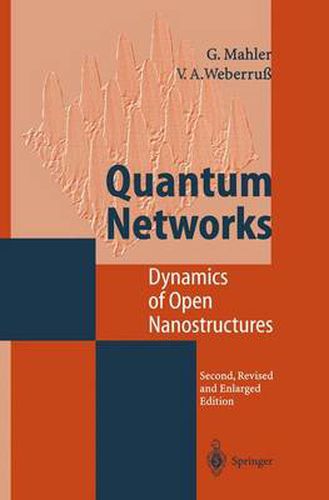Readings Newsletter
Become a Readings Member to make your shopping experience even easier.
Sign in or sign up for free!
You’re not far away from qualifying for FREE standard shipping within Australia
You’ve qualified for FREE standard shipping within Australia
The cart is loading…






This title is printed to order. This book may have been self-published. If so, we cannot guarantee the quality of the content. In the main most books will have gone through the editing process however some may not. We therefore suggest that you be aware of this before ordering this book. If in doubt check either the author or publisher’s details as we are unable to accept any returns unless they are faulty. Please contact us if you have any questions.
Quantum Networks is focused on density matrix theory cast into a product operator representation, particularly adapted to describing networks of finite state subsystems. This approach is important for understanding non-classical aspects such as single subsystem and multi-subsystem entanglement. An intuitive picture evolves of how these features are generated and destroyed by interactions with the environment. This second edition has been revised and enlarged. For better clarity the text has been partly reorganized and figures and formulae are presented in a more attractive way.
$9.00 standard shipping within Australia
FREE standard shipping within Australia for orders over $100.00
Express & International shipping calculated at checkout
This title is printed to order. This book may have been self-published. If so, we cannot guarantee the quality of the content. In the main most books will have gone through the editing process however some may not. We therefore suggest that you be aware of this before ordering this book. If in doubt check either the author or publisher’s details as we are unable to accept any returns unless they are faulty. Please contact us if you have any questions.
Quantum Networks is focused on density matrix theory cast into a product operator representation, particularly adapted to describing networks of finite state subsystems. This approach is important for understanding non-classical aspects such as single subsystem and multi-subsystem entanglement. An intuitive picture evolves of how these features are generated and destroyed by interactions with the environment. This second edition has been revised and enlarged. For better clarity the text has been partly reorganized and figures and formulae are presented in a more attractive way.